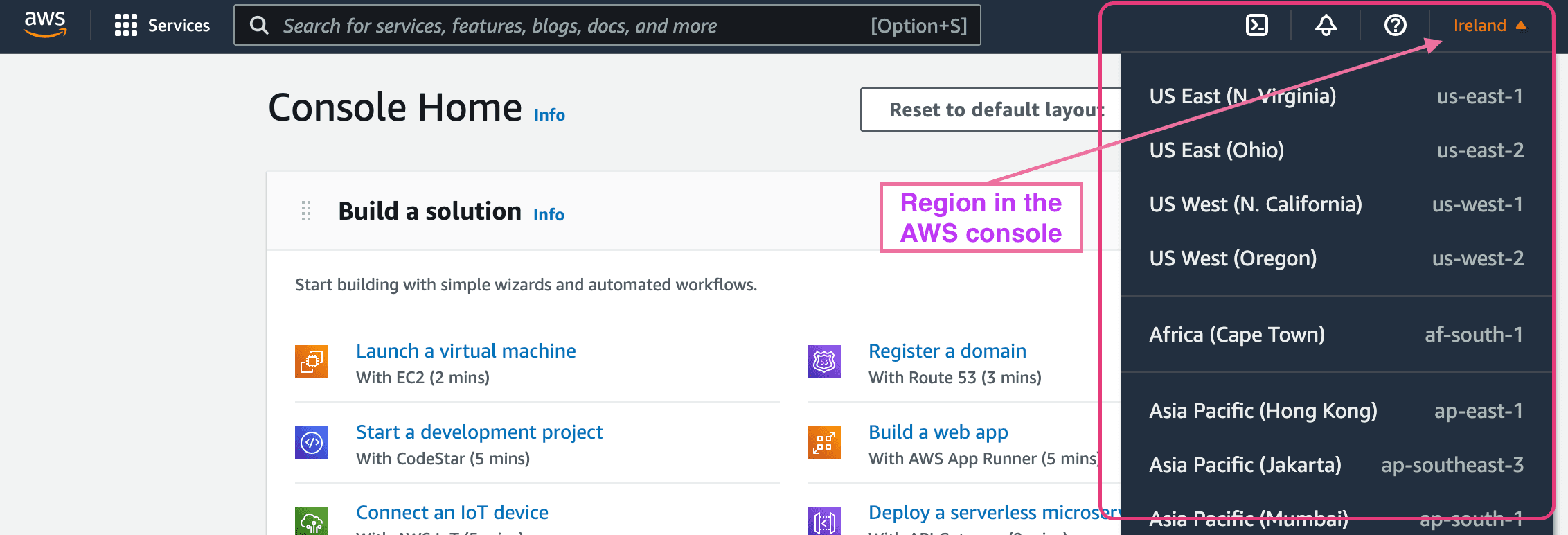AWS is a global cloud platform, that provides over 200 services from data centres across the globe. As such, it has an accompanying global network to run and manage it's many services. The availability, reliability and security of this network is of upmost importance to keep the services on AWS running. Below is an overview of the regions, availability zones & edge locations that make up some of the global AWS network.
AWS global infrastructure is made up of 26 regions and 84 availability zones, serving 245 countries and territories (at the time of writing, Jun 2022).
A good way to think of the below, is region is the biggest geographical area, and I describe them in order of geographically biggest to smallest.
Regions
A region is a physical location in the world where AWS services are hosted.
An example of a region is London or Paris. Each region has 2 or more availability zones.
You can browse all the available regions, and see which region you are currently in, in the AWS console. Note, if you select a global service, such as Route53 you might see the region as Global meaning this service isn't region dependant.

Availability Zones
An availability zone (AZ) is one or more data centres (physical buildings with servers inside) with redundant power, networking and connectivity in an AWS Region.
Within an availability zone, there may be several data centres in close physical proximity which make up 1 zone. An AZ will be physically separated from other AZs, within 100km of each other.
Edge Locations
Edge locations are also made up of data centres. They are the closest data centres to the users connecting to AWS services.
In terms of geography, edge locations are typically placed in cities or areas with a high population.They are endpoints that AWS uses for caching content, and typically used by services such as Cloudfront, to provide the user a better experience with lower latency.
This blog post is from a series of posts I am writing, as I study for the AWS Certified Solution Architect - Associate. Information contained within these posts may help you towards this exam.